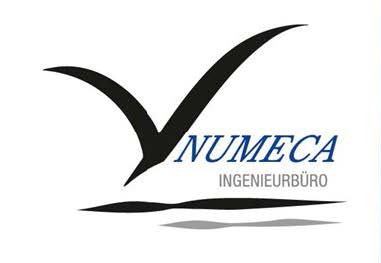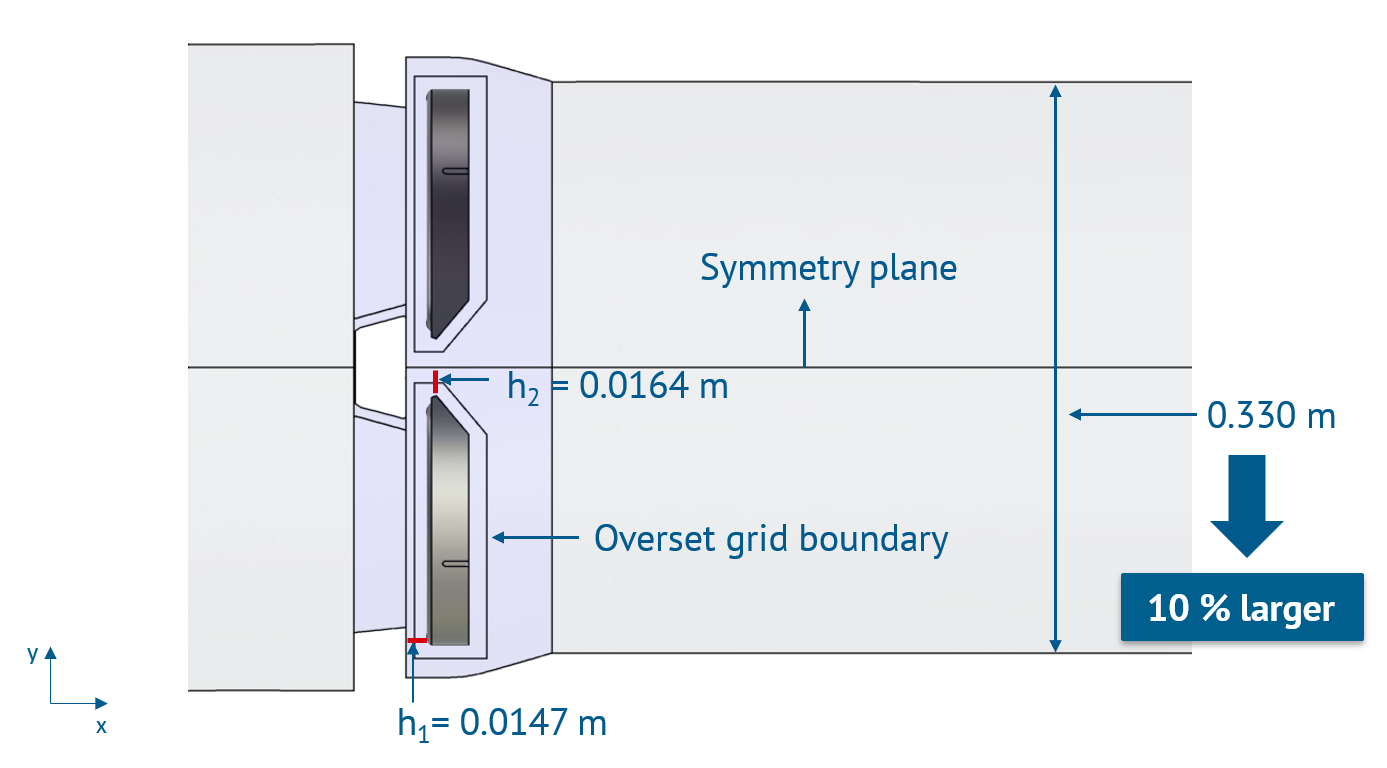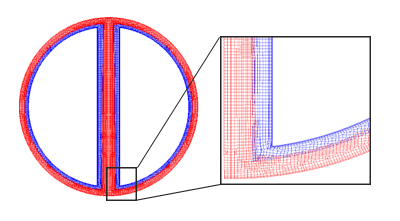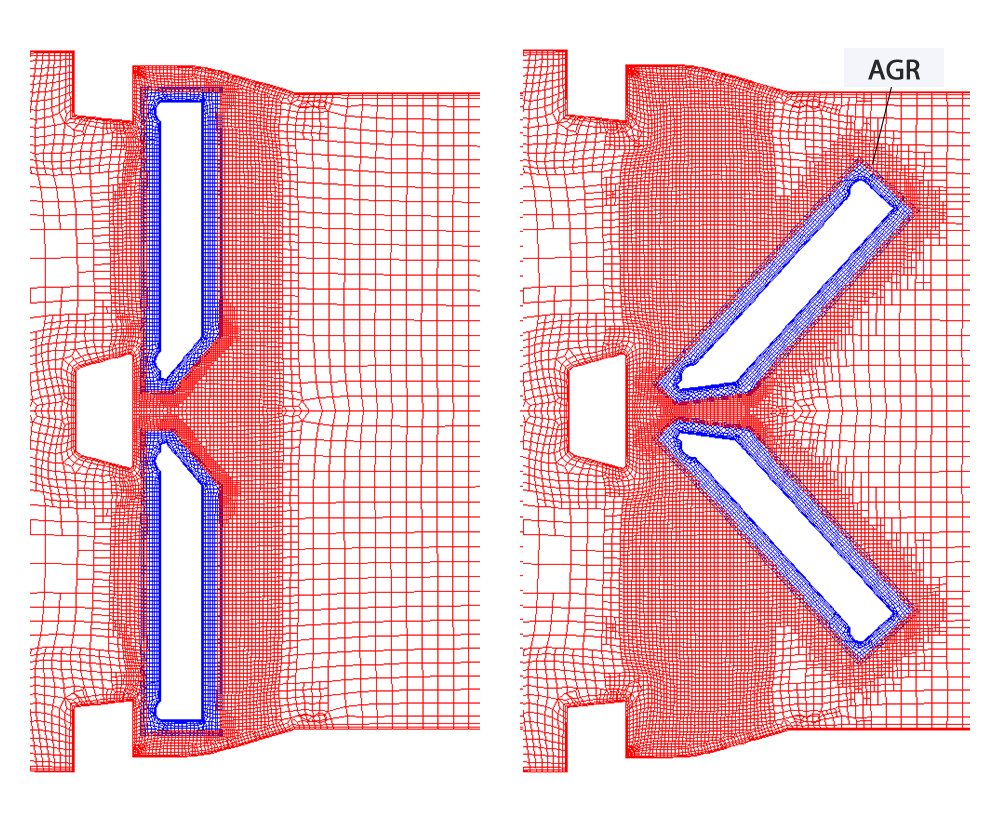Investigation of the Motion of a Dual-Disc Check Valve using Transient CFD
Valve | FSI | AGR | Overset Grid
Introduction
Check valves are commonly implemented in piping systems in order to control the fluid flow and to avoid reverse flows, since these can degrade the performance of the system and can cause structure failures. The opening of the valves is mainly caused by the hydraulic force which is the sum of viscous and pressure-based forces acting on the discs. A dual-disc check valve relies primarily on the spring force for closure. Here, the transient flow through a typical dual-disc check valve is investigated in FINE™/Marine and the opening process of the valve is analysed.
Methodology – opening period a dual-disc check valve
To simulate the opening period of a dual-disc check valve, an overset grid approach, also known as Chimera, and an Adaptive Grid Refinement (AGR) for grid continuity are applied. The main purpose of the AGR is to ensure a better transfer of data at the interpolation regions during the computation. The kinematics of the discs are solved for one Degree of Freedom (DoF) using a Fluid–Structure Interaction (FSI) in order to couple the rigid body motion with the flow motion.
Simulation set-up
In the considered case, the fluid is water and the flow is incompressible. Different inlet velocities are simulated, leading to different mass flows, accordingly. The three-dimensional geometry is simplified such that the valve is not fully closed, since solid-solid contact is not yet available. Extensions upstream and downstream of the check valve are created, in order to place the boundary conditions far away from the check valve. The geometry and the flow are assumed to be symmetric, hence the simulation is restricted to one half of the complete domain in order to reduce computational resources.
The grid generation is conducted in OMNIS™/HEXPRESS with full unstructured hexahedral grids. The grid has a total number of cells of 1.3 million in the beginning of the computation. In the overlapping regions, the cell sizes of both domains – overset grid and background grid – are the same in order to ensure a good interpolation of data.
A wall function is applied at the solid walls and the turbulence model is k–w–SST. A prescribed reference pressure at the outlet is given as zero-gauge pressure. To initialize the flow field, steady and unsteady simulations are firstly conducted before starting the FSI simulations.
Aside from the two constant inlet velocities of 1 and 2 m/s, a time-dependent inlet velocity boundary condition is applied using a Dynamic Library. In this case, the inlet velocity increases linearly from 1 to 2 m/s. This can be compared to a pump start-up, for instance.
Aside from the disc’s mass, the inertia tensor and the center of gravity, a spring constant is given in order to include the moment due to the spring force in the computation for solving the kinematics of the discs.
Results
The simulations provide a more detailed insight of the flow field inside the dual-disc check valve, such as recirculation areas in the corners of the valve and on the downstream side of the discs, due to the sharp corners and the sudden contraction and expansion of the flow.
A correlation between mass flow, moment due to hydraulic forces and disc angle is observed. Increasing the mass flow, i.e. increasing the inlet velocity, leads to a rise of the moment caused by hydraulic forces, and consequently leading to a shorter opening period and higher disc angles (until it reaches the maximal opening angle)[1].
If the moment due to spring force becomes greater than the moment due to hydraulic force, the disc angle oscillates (see zoom of the Figure 4) until an equilibrium between both moments is reached, consequently leading to an almost constant disc angle.
Conclusions
The opening period of a typical dual-disc check valve is successfully simulated in FINE™/Marine. The results show a strong correlation between mass flow, moment due to hydraulic force and disc angle. The work provides a better understanding of the flow field inside a typical dual-disc check valve.
References
[1] Joaquim, A. G. Investigation of the Motion of a Dual-Disc Check Valve using Transient CFD. TU Kaiserslautern, NUMECA Ingenieurbüro. Master’s Thesis, 2020.
Authors
Guilherme Joaquim , Student at NUMECA Ingenieurbüro




